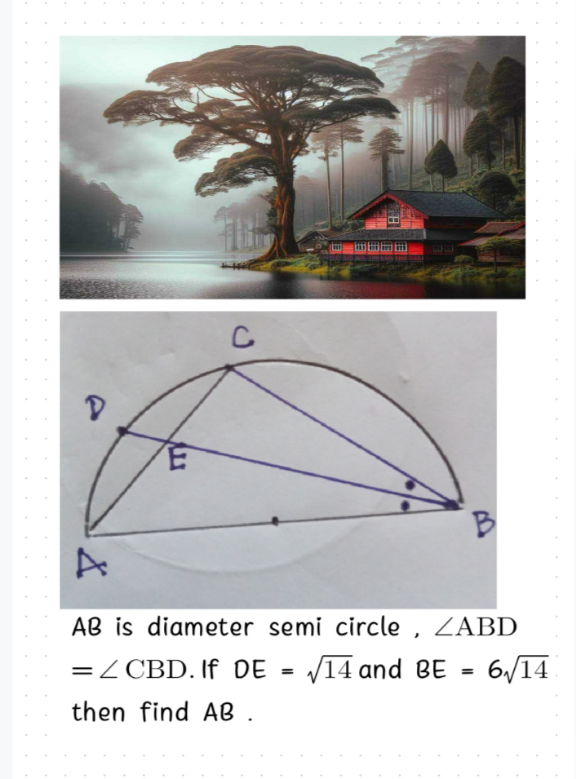Question Number 206321 by cortano21 last updated on 12/Apr/24

Answered by TonyCWX08 last updated on 12/Apr/24

$${By}\:\Delta{BCD}\:\backsim\:\Delta{CDE} \\ $$$$\frac{{x}}{\:\sqrt{\mathrm{14}}}=\frac{\mathrm{7}\sqrt{\mathrm{14}}}{{x}} \\ $$$${x}^{\mathrm{2}} =\mathrm{98} \\ $$$$ \\ $$$${Using}\:{Pythagoras}\:{Theorem}\:{in}\:\Delta{ABD} \\ $$$${x}^{\mathrm{2}} +\left(\mathrm{7}\sqrt{\mathrm{14}}\right)^{\mathrm{2}} ={AB}^{\mathrm{2}} \\ $$$$\mathrm{98}+\mathrm{686}={AB}^{\mathrm{2}} \\ $$$${AB}^{\mathrm{2}} =\mathrm{784} \\ $$$${AB}=\mathrm{28} \\ $$
Answered by mr W last updated on 12/Apr/24

Commented by mr W last updated on 12/Apr/24

$${DC}={AD} \\ $$$$\frac{{DE}}{{DC}}=\frac{{DE}}{{AD}}=\frac{{AD}}{{DB}} \\ $$$$\Rightarrow{AD}^{\mathrm{2}} ={DE}×{DB}=\sqrt{\mathrm{14}}×\mathrm{7}\sqrt{\mathrm{14}}=\mathrm{7}×\mathrm{14} \\ $$$${AB}=\sqrt{\mathrm{7}×\mathrm{14}+\left(\mathrm{7}\sqrt{\mathrm{14}}\right)^{\mathrm{2}} }=\mathrm{28} \\ $$
